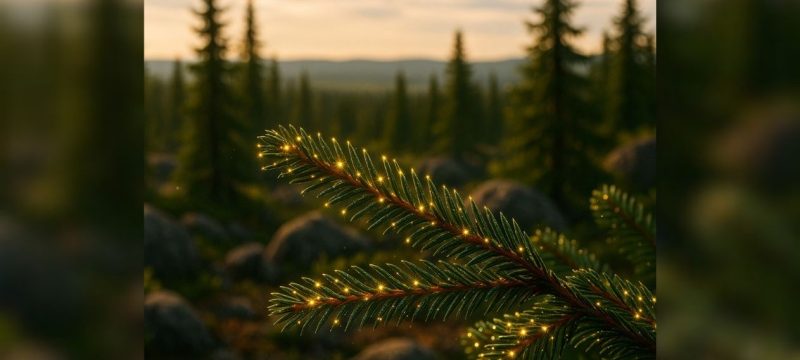In a remarkable breakthrough, scientists have discovered that certain trees can literally grow gold — forming tiny, solid particles of the precious metal inside their leaves.
Researchers from the University of Oulu and the Geological Survey of Finland found that bacteria living inside the needles of Norway spruce trees play a key role in this phenomenon. These microbes can transform dissolved gold from the soil into solid nanoparticles, effectively embedding microscopic traces of gold within the tree’s tissues.
The study, conducted near the Kittilä gold mine in Finland, analyzed 138 needle samples from 23 spruce trees. Surprisingly, gold nanoparticles were found in four of them, contained within bacterial biofilms inside the leaves.
Scientists have long known that metals like gold travel through soil as dissolved ions, absorbed by plants through their roots. Many plants also host beneficial bacteria that help them survive tough environments and assist in biomineralization — the natural process by which living organisms form minerals.
This new research, however, provides the first concrete evidence that such bacteria can convert soluble gold into solid form inside plant tissues.
“Our study offers the first indications of how gold moves into plant shoots and forms nanoparticles within spruce needles,” said Dr. Kaisa Lehosmaa, lead researcher from the University of Oulu. “In the soil, gold exists in a soluble, liquid form. It is carried by water into the spruce needles, where microbial activity transforms it back into solid, nanosized particles.”
The particles are extremely small — about a millionth of a millimetre — invisible to the naked eye and too tiny for commercial extraction. However, scientists believe the discovery could revolutionize geological exploration by offering eco-friendly methods for locating gold deposits.
“The bacteria associated with spruce needles appear capable of converting soluble gold into solid nanoparticles,” Dr. Lehosmaa explained. “If we can identify similar bacteria in other plants, it could pave the way for more sustainable and biological techniques to detect gold underground.”
While you won’t be harvesting gold leaves anytime soon, the discovery highlights a fascinating intersection of biology, geology, and environmental science. It may also provide insights into how nature subtly manages metallic elements within ecosystems — and how humans can harness these processes for greener mineral exploration.
In other news also read about Have Scientists Finally Cracked the Dark Matter Mystery?









